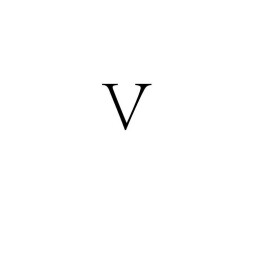共找到21條詞條名為v的結果 展開
v
英語動詞
v在英語里代表動詞,是verb的簡寫。相關的詞類還有vt是及物動詞的縮寫(verb transitive );vi是不及物動詞縮寫(intransitive verb)。
1) v代表動詞,V是(Verb)的縮寫;vt是及物動詞的縮寫(verb transitive );vi是不及物動詞縮寫(intransitive verb ) ;表示動作和狀態的詞叫做動詞。
2) 根據其在句中的功能,動詞可分為四類,分別是:實義動詞(Notional Verb)、系動詞(Link Verb)、助動詞(Auxiliary Verb)、情態動詞(Modal Verb)。
說明:有些情況下,有些動詞是兼類詞,例如:
We are having a meeting. 我們正在開會。(having是實義動詞。)
He has gone to New York. 他已去紐約。(has是助動詞。)
3) 動詞根據其後是否帶有賓語,可分為兩類,分別是:及物動詞(Transitive Verb)、不及物動詞(Intransitive Verb),縮寫形式分別為vt. 和vi.。
英語動詞是句子的核心。它既決定著句子意思的表達同時又決定著句子的語法結構。難怪有人說,英語是動詞和介詞的語言。可見研究動詞的用法在英語學習中是十分重要的。
分清及物不及物
分清動詞的及物不及物是在英語學習中必須解決的首要問題。動詞及物與不及物通常有以下幾種情況:
a.主要用作及物動詞。及物動詞後面必須跟賓語。可以用於:"主+謂+賓";"主+謂+雙賓";"主+謂+賓+賓補"結構。如:
He reached Paris the day before yesterday.
Please hand me the book over there.
They asked me to go fishing with them.
類似的還有:buy, catch, invent, found, like, observe, offer, prevent, promise, raise, find, forget, receive, regard, see, say, seat, supply, select, suppose, show, make, take, tell....
b.主要用作不及物的動詞。不及物動詞後面不跟賓語。只能用與:"主+謂"結構。
This is the room where I once lived.
類似的還有:agree, go, work, listen, look, come, die, belong, fall, exist, rise, arrive, sit, sail, hurry, fail, succeed....
c.既可以用作及物又可以用作不及物的動詞,其意義不變。如begin 都是作"開始"講。
everybody , our game begins. let us begin our game.
類似的還有:start, answer, sing, close, consider, insist, read, learn, prepare, pay, hurt, improve....
d.既可以用作及物又可以用作不及物的動詞,其意義完全不同。
這類動詞作不及物動詞是一個意義;而作及物動詞時卻是另一個意義。如lift作不及物動詞時是指煙霧的"消散"。we saw the mountain when the clouds lifted. 作及物動詞時是"升高;舉起"。
He lifted his glass and drank.
類似的還有:
beat vi.跳動 vt. 敲、打;
grow vi.生長 vt. 種植
play vi.玩耍 vt. 打(牌、球),演奏
smell vi.發出(氣味) vt. 嗅
ring vi.(電話、鈴)響vt.打電話
speak vi.講話 vt. 說(語言)
hang vi. 懸掛 vt. 絞死
operate vi.動手術 vt. 操作
辨別表動作與表結果的動詞
表動作的動詞強調動作的發生,不涉及該動詞的結果。如:
He looked at the picture. He saw a picture .
前一句中的動詞強調"看"這一動作;而後一句中的動詞表示"看到"這一結果。
類似的還有:tear at; tear, look for; find, try to do sth.; manage to do sth., prepare for; be prepared for, advise; persuade 等。
記住瞬間動詞
英語中不少動詞所表示的動作在瞬間就可以完成.如:
He arrived in paris yesterday.
而另一些動詞所表示的動作則可以延續.如:
They worked until 12 o'clock last night.
特別是在現在完成時態的句子中,瞬間動詞的完成時態不能跟表示一段時間的時間狀語連用。瞬間動詞有:arrive, borrow, buy, close, fall, finish, go, join, kill, hit, leave, lend, die, marry, open, reach, return, start, stop, recognize....等。
表狀態的連繫動詞與表變化的連繫動詞
英語中的連繫動詞主要分為兩大類:
a.表狀態的連繫動詞。如:he is a good worker. 除了be 而外,還有:stand(位於),lie(位於),stay, have, consist of, belong to, exist, weigh, own....等。
b.另一類連繫動詞表示動作或變化,是由行為動詞轉化而來的。一般在這些連繫動詞後跟形容詞作表語如:his hair grows grey. 這類連繫動詞還有: turn, become, taste, smell, sound, look, feel, get...等。
注意詞義相近,用法不同的動詞
a.表主觀與客觀的動詞
I received his invitation last night, but i didn't want to accept it.
該句中,動詞receive, accept 都表示"接受"但前者表示客觀地接收到什麼東西;後者表示 "I" 的主觀意願。類似用法的動詞還有:listen to; hear, look at; see, must; have to等。
b.表直接與間接的動詞
He heard that the scientist would come to our school.
He heard of the news that the scientist would come to our school.
前句中hear的表示直接聽說的,而後一句中hear of 的表示間接聽說的。類似用法的動詞還有:know; know of, speak; speak of, talk; talk of等。
重視多字動詞的用法
所謂多字動詞是指動詞與某些副詞、介詞構成的動詞片語。一般有四種形式:
a."動詞+介詞"結構。 該結構中的動詞是不及物動詞,當和一些介詞搭配后,則把它看成一個整體,即把它看成一個及物動詞。如:
We never thought of such success when we first started.
類似用法的還有:agree to, ask for, attention to, break into, call upon, deal with, laugh at, dream of, listen to, look at, operate on, talk about, rely on, refer to...
b."動詞+副詞"結構。該結構中的動詞是及物動詞的,該結構及物;是不及物的,則不及物。如:
We put off the sports meet.
After he grew up, he went to london to work for a company.
類似用法的還有: bring about, bring up, call up, carry out, find out, give up, hand in, help out, look up, make out, pass on, point out, put away, put down, put off, put on, ring up, set up, take up, think over, turn down, use up, work out..., wake up, shut up, come about, break out, carry on, come up, fall over, get away, get back, look out, go up, go out, stay up....
在這類結構中,必須注意有的多字動詞既及物又可不及物。有的甚至漢語意義也完全不相同。如:
He looked up and saw his teacher in front of him. (vi. 抬起頭看)
He looked up the word in the dictionary. (vt. 查找)
類似的有break down vi.(車等)壞了 vt. 分解,分為 ;
go over vi. 走過去 vt. 複習,仔細查看等。
c."動詞+副詞+介詞"結構。如:
We should do away with that sort of thing.
類似的有:give in to, catch up with, look down upon, make up for, put up with....
d."動詞+名詞+介詞"結構。該結構是最多,最常見的多字動詞。如:
We will take care of them.
類似的有:catch sight of, keep an eye on, make use of, make a fool of, make fun of, make room for, make sure of, knock out of, have a word with, pay attention to, put an end to, set fire to, take advantage of, take hold of, take note of, take notice of, take part in, take pride in, take possession of, play a trick on, play a part in....
****
說明:同一動詞有時可用作及物動詞,有時可用作不及物動詞。例如:
She can dance and sing.
她能唱歌又能跳舞。(sing在此用作不及物動詞。)
She can sing many English songs.
她能唱好多首英文歌曲。(sing用作及物動詞。)
3 ,英語動詞
4) 根據是否受主語的人稱和數的限制,可分兩類,分別是:限定動詞(Finite Verb)、非限定動詞(Non-finite Verb)例如:
She sings very bad.
她唱得很差。(sing受主語she的限制,故用第三人稱單數形式sings。)
She wants to learn English well.
她想學好英語。(to learn不受主語she的限制,沒有詞形變化,是非限定動詞。
說明:英語中共有三種非限定動詞,分別是:動詞不定式(Infinitive)、動名詞(Gerund)、分詞(Participle)。
5) 根據動詞的組成形式,可分為三類,分別是:單字詞(One-Word Verb)、短語動詞(Phrasal Verb)、動詞短語(Verbal Phrase)例如:
The English language contains many phrasal verbs and verbal phrases.
英語里有許多短語動詞和動詞短語。(contains是單字動詞。)
Students should learn to look up new words in dictionaries.
學生們學會查字典。(look up是短語動詞。)
The young ought to take care of the old.
年輕人應照料老人。(take care of是動詞短語。)
6)動詞有五種形態,分別是:原形(Original Form)、第三人稱單數形式(Singular From in Third Personal)、過去式(Past Form)、過去分詞(Past Participle)、現在分詞(Present Participle)。
7) 及物動詞不需要介詞
在英語錯誤中,"及物動詞+介詞+賓語"(transitive verb+preposition+object),是常見的一種。所謂及物動詞,就是謂語動詞(predicative verb),通過介詞引薦賓語。相反的,不及物動詞(intransitive verb)是不帶賓語的。有許多動詞,雖然性質是及物的,但一定要有賓語。
